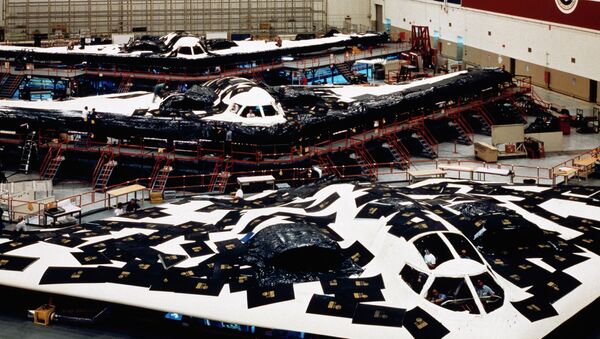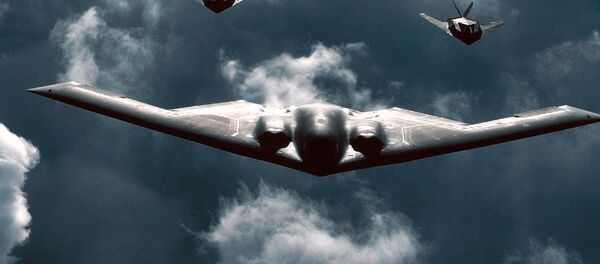Theoretically, the B-3 could conduct air raids from American bases in Guam and Diego Garcia, according to calculations by the Chinese People’s Daily.
Specific details about the B-3 are kept shrouded in secrecy, but defense experts have managed to put a few pieces of the puzzle together.
Here's a chart showing funding projections for the Air Force's next bomber (LRS-B) in successive budget requests. pic.twitter.com/Ge3jEhNhSH
— Todd Harrison (@ToddHarrisonDC) February 4, 2015
Despite earlier speculation, the new bomber will likely be a traditional, manned aircraft. According to Forbes, the B-3 will also not feature any kind of mind-blowing new technologies.
It will also most likely lack supersonic capabilities.
.@GenMarkWelsh: LRS-B wil replace B-52, B-1 eventually. Start fielding mid-20s and will continue roughly 25 years.
— Air Force Magazine (@AirForceMag) August 24, 2015
One of the main differences with the new bombers is the payload. While the B-2 could carry roughly 40,000 pounds, the B-3 will be significantly less. Still, using modern smart bombs, the B-3 will still be capable of destroying a comparable number of targets.
Another great feature of the US Air Force’s first information-age bomber will be its integration into various military networks, including orbital reconnaissance systems. It will likely rely heavily on its off-board systems for collecting targeting data and to generate electronic countermeasures.
At an estimated $550 million per plane, the Pentagon believes that one hundred LRS-Bs will be enough to cover all the US long-range strike needs by 2025.
Three must-watch contract awards this summer: LRS-B, JLTV, DHMSM. @BGOV tracking pic.twitter.com/rRslSIX9Mc
— Brian Friel (@DCbfriel) June 1, 2015




